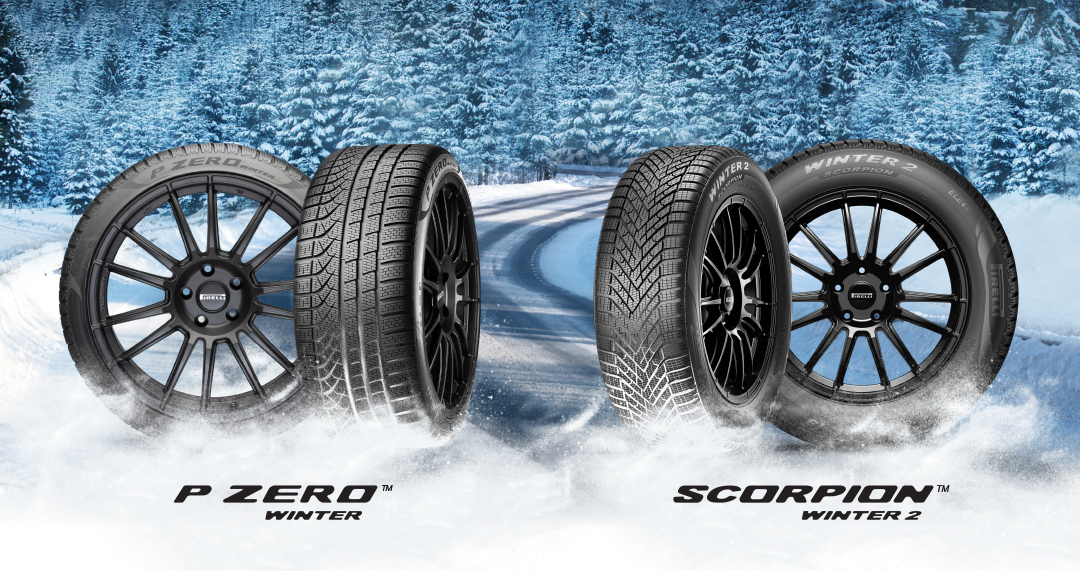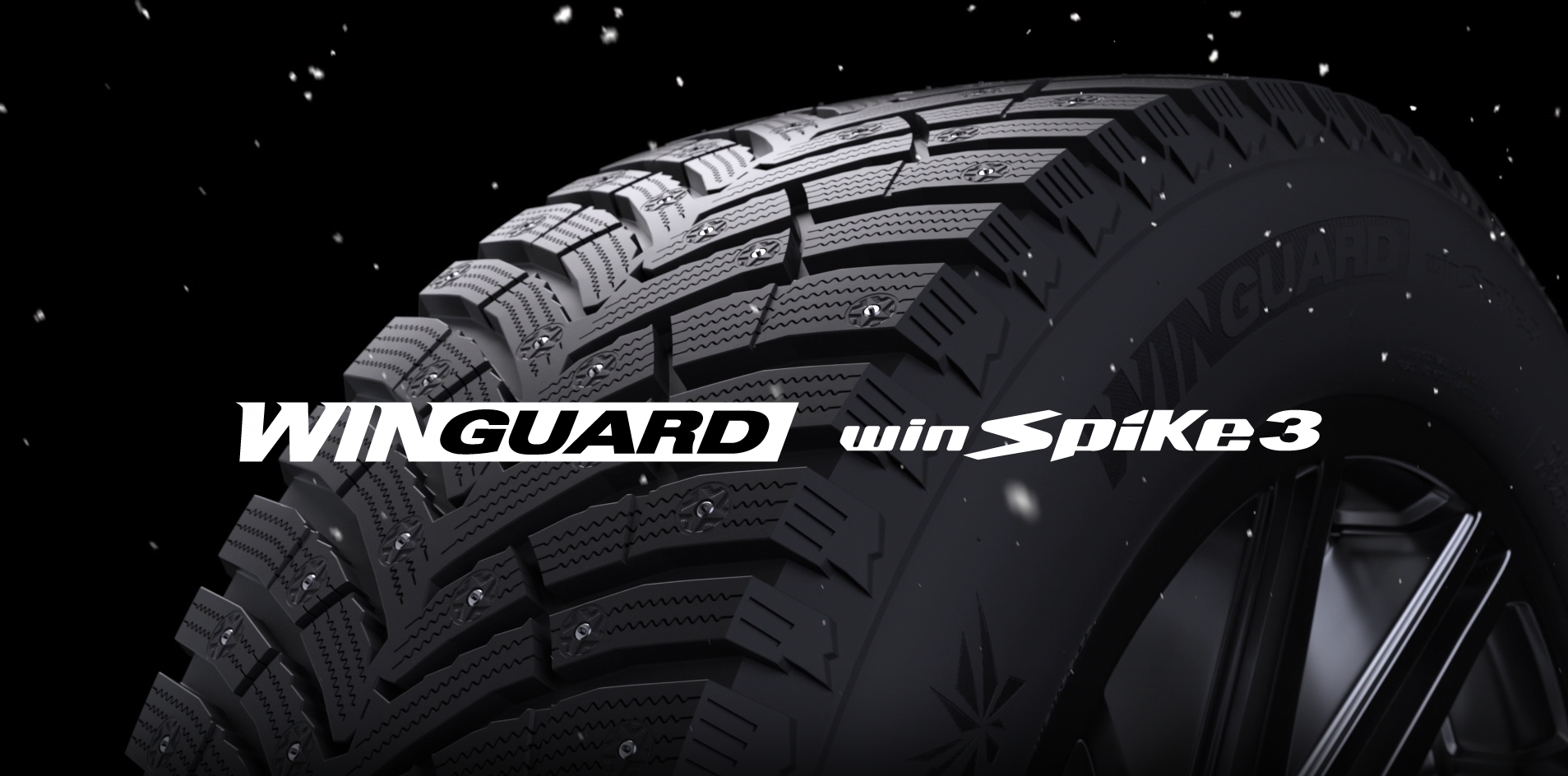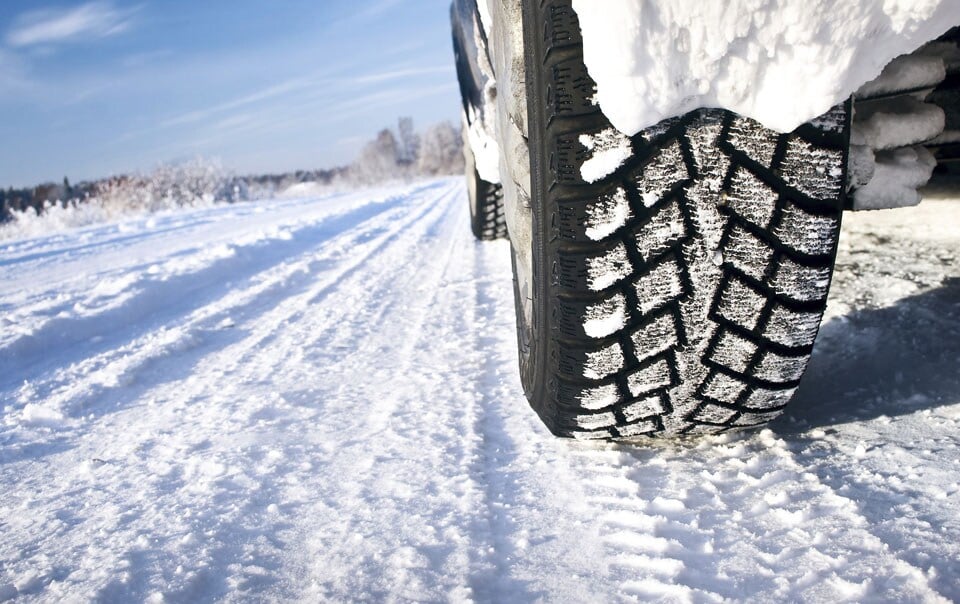Last Updated on August 2, 2024
Introduction to Tire Authenticity: Understanding the Real vs. Fake Tires
The automotive business, and by extension, the tire industry, is an essential component of modern transportation. Tires are crucial to vehicle safety, performance, and efficiency. However, the rise of counterfeit tires has emerged as a major issue, risking human safety and damaging the tire industry’s integrity. This introduction goes into the tire industry landscape, emphasizing the need for genuine tires for safety.

Overview of the Tire Industry
The tire industry is a global powerhouse that is essential to the automobile sector. It entails a complex supply chain, ranging from raw material extraction and processing to finished product design, manufacturing, and distribution. Major players in this industry include well-known brands such as Michelin, Goodyear, Bridgestone, and Continental. These companies invest heavily in research and development to enhance tire performance, longevity, and safety features.
A key component of the sector is its commitment to quality and safety standards. Tires are designed to satisfy strict requirements, ensuring that they can withstand various driving situations, loads, and speeds. The manufacturing process is carefully regulated, with strong quality control procedures implemented at all stages. This guarantees that the tires produced meet the global performance and safety criteria established by regulatory authorities.
Importance of Authentic Tires for Safety
Authentic tires are essential for maintaining vehicle safety and performance. They are designed to provide optimal grip, handling, and stability for safe driving. Genuine tires are evaluated for tread wear, braking performance, and puncture resistance. They are also built to function reliably in various temperatures and road conditions.
Counterfeit tires, on the other hand, pose a serious risk. They are frequently made with poorer materials and manufacturing procedures, resulting in poor performance and a higher risk of failure. The risks connected with fake tires are:
- Reduced Grip and Handling: Fake tires may not give appropriate grip, particularly in inclement weather, increasing the danger of accidents.
- Poor Braking Performance: Using fake tires may result in a longer braking distance, which can be essential in an emergency.
- Increased Wear and Tear: Fake tires tend to wear out faster, demanding more frequent replacements and perhaps leading to tire failure.
- Heightened Risk of Blowouts: Due to inferior materials and construction, counterfeit tires are more prone to blowouts, which can be catastrophic at high speeds.
Understanding Tire Counterfeiting
Tire counterfeiting is a growing concern in the automotive industry, posing severe risks to consumers and manufacturers alike. This section delves into the nature of knock-off tires, the extent of their prevalence, and the various dangers they pose.
What are Knock-Off Tires?
Knock-offs, or counterfeit tires, are imitations of products made by reputable manufacturers. These tires are often produced using inferior materials and need more rigorous testing and quality control than genuine tires. They are designed to look like natural products, often copying tread patterns, sidewall designs, and even brand markings to deceive consumers. However, these tires must improve performance, durability, and safety despite their appearance.
Prevalence of Tire Counterfeiting
Tire counterfeiting is becoming more common, thanks partly to manufacturing and distribution technology advances that make it easier for counterfeiters to produce and sell fake tires. These tires are frequently sold through unauthorized dealers or internet platforms, making authenticity verification more difficult.
The problem is global, impacting both developing and developed countries. In some areas, inadequate regulatory enforcement and low consumer awareness help to proliferate counterfeit tires. Authorities and producers must trace and limit the dissemination of these products, which frequently resemble genuine supply networks.
Risks Associated with Fake Tires
The risks related to counterfeit tires are significant and multifaceted:
- Safety Hazards: The most important concern is safety. Counterfeit tires may not meet the necessary safety criteria for handling, braking, and stability. This can lead to accidents, particularly in difficult driving conditions.
- Economic Losses: Consumers who unknowingly purchase counterfeit tires will likely require more frequent replacements due to faster wear and tear. This results in a financial loss not only for the consumer but also for legitimate manufacturers, who lose money and may suffer damage to their brand reputation.
- Legal and liability issues: There are also legal consequences. Selling counterfeit goods is unlawful, and shops that sell fake tires may face harsh fines.
- Environmental Impact: Counterfeit tires often do not adhere to environmental standards in production and disposal. This can lead to increased pollution and negative environmental impacts, as these tires are usually not recyclable.
Identifying Genuine Tires
Obtaining and using genuine tires is essential to safety, performance, and value in the automotive industry. This section discusses how to identify legitimate tires, focusing on crucial features, brand markings, certification labels, and the standards they must follow.
Key Features of Authentic Tires
Genuine tires are differentiated by several key features resulting from rigorous manufacturing processes and quality control standards. These features include:
- Material Quality: Authentic tires are made from high-grade rubber compounds and other materials that offer durability, flexibility, and longevity. The material composition is designed to provide optimal performance in various conditions.
- Tread Design: The tread pattern on genuine tires is carefully engineered for specific performance characteristics like water displacement, traction, and noise reduction. Each brand has unique tread designs that are often difficult for counterfeiters to replicate precisely.
- Sidewall Information: The sidewalls of genuine tires contain vital information, including the tire size, type, load index, speed rating, and manufacturing details. This information is printed clearly and accurately.
- Uniformity and Balance: Authentic tires are manufactured with a focus on uniformity and balance to ensure smooth driving and minimal vibration. This is achieved through precise control of tire dimensions and material distribution.
Brand Marks and Certification Labels
Brand marks and certification labels are critical in identifying genuine tires. These include:
- Brand Logos: Authentic tires will have the manufacturer’s logo clearly and accurately embossed or printed on the sidewall. The logos are usually distinct and challenging to replicate accurately.
- Certification Marks: Look for certification marks like the DOT (Department of Transportation) code in the United States, which indicates compliance with regional safety standards. These marks are a sign of authenticity and adherence to safety regulations.
- Serial Numbers: Genuine tires have unique serial numbers (often referred to as the Tire Identification Number or TIN) that provide manufacturing details like the plant, size, and date of manufacture. This number can be cross-checked for authenticity.
Quality Standards for Legitimate Tires
Legitimate tires must meet specific quality standards that govern their design, manufacturing, and performance. These standards include:
- Safety Standards: Genuine tires are designed to meet safety standards set by various organizations, such as the US National Highway Traffic Safety Administration (NHTSA) or the European ECE. These standards ensure the tire’s capability to perform safely under various conditions.
- Performance Criteria: Authentic tires are tested for various performance criteria, including traction, treadwear, and temperature resistance. This ensures they can safely handle different driving conditions and surfaces.
- Quality Control Processes: Reputable manufacturers employ strict quality control processes throughout the manufacturing cycle. This includes checks for defects, uniformity, and performance consistency.
Identifying genuine tires involves carefully examining their physical characteristics, brand marks, and certification labels and understanding the quality standards they should meet. Consumers should be vigilant and purchase tires from reputable dealers or outlets to ensure they are getting authentic, safe, and reliable products. By doing so, they safeguard their safety and contribute to maintaining high standards within the tire industry.
Spotting Fake Tires
Given the sophistication of some counterfeit products, distinguishing fake tires from genuine ones is a significant challenge. This article provides insights into how consumers can spot fake tires through visual inspection, recognition of branding and labeling discrepancies, and understanding of material quality and construction differences.
Visual Inspection Tips
A careful visual inspection can often reveal whether a tire is counterfeit. Here are some tips:
- Examine Tread Patterns: Genuine tires have precise, uniform tread patterns. Counterfeit tires may exhibit irregular or poorly defined tread patterns. Also, the tread depth can be a giveaway; fake tires often have shallower treads.
- Check Sidewall Markings: Legitimate tires have clear, evenly printed sidewall information, including size, type, and safety markings. This information may need clarification, be misspelled, or need to be consistent on counterfeit tires.
- Look for Physical Defects: Genuine tires undergo strict quality control, so they are typically free from visible defects. In contrast, counterfeit tires may have visible imperfections like uneven tread, bubbles, or poorly finished surfaces.
- Assess Overall Appearance: Authentic tires have a consistent, high-quality appearance. Counterfeits might look off in color, texture, or general finish.
Discrepancies in Branding and Labeling
Branding and labeling are crucial in identifying genuine tires. Counterfeiters often get these details wrong:
- Logo Authenticity: Compare the tire’s logo with the original manufacturer’s. Counterfeits often have slightly altered logos or colors that are off.
- Certification Labels: Genuine tires have specific certification labels like the DOT code. If these labels are missing, incorrectly formatted, or appear to be tampered with, the tire could be counterfeit.
- Serial Number Check: The Tire Identification Number (TIN) should be checked for consistency. In counterfeit tires, these numbers may be missing or not align with the manufacturer’s formatting.

Differences in Material Quality and Construction
The material quality and construction of a tire are the most challenging aspects for counterfeiters to replicate:
- Rubber Quality: Authentic tires are made from high-grade rubber. Counterfeit tires often use inferior rubber, which can feel excessively hard or unusually soft.
- Construction Flaws: Genuine tires have a precise and balanced construction. In contrast, counterfeit tires may have uneven tread wear, poor bead construction, or visible flaws in joining the tire’s sections.
- Weight Check: Counterfeit tires often weigh less than genuine ones due to the use of inferior, lighter materials.
Spotting fake tires requires a combination of visual inspection, awareness of branding and labeling norms, and an understanding of material and construction quality. Consumers should be vigilant when purchasing tires, especially from non-reputable sources or online platforms. When in doubt, consulting with a tire expert or a reputable dealer can provide additional assurance in verifying the authenticity of tires. Remember, the risks associated with using counterfeit tires extend beyond financial loss, impacting overall vehicle safety and performance.
The Impact of Counterfeit Tires
Counterfeit tires pose significant risks and consequences that extend beyond the automotive industry, affecting safety, the economy, and the legal spheres. Understanding the impact of these counterfeit products is crucial for consumers, manufacturers, and policymakers.
Safety Risks and Accident Statistics
The primary concern with counterfeit tires is safety. These tires are often made with inferior materials and do not undergo the rigorous testing that legitimate tires do, leading to:
- Increased Risk of Accidents: Counterfeit tires may fail in critical situations due to poor construction, leading to accidents. Issues like blowouts, tread separations, and reduced traction significantly increase the risk of road accidents.
- Compromised Emergency Handling: In emergency braking or evasive maneuvers, counterfeit tires could perform better, potentially leading to collisions.
- Accident Statistics: While specific statistics linking counterfeit tires to accidents are challenging to pinpoint, various reports from road safety authorities indicate that tire failures contribute to a significant percentage of road accidents. Counterfeit tires are likely to be overrepresented in such incidents due to their inferior quality.
Economic Impact on Consumers and Manufacturers
The proliferation of counterfeit tires also has a significant economic impact:
- Increased Costs for Consumers: Consumers may be lured by the lower upfront cost of counterfeit tires. However, these tires often have a shorter lifespan and may lead to frequent replacements, increasing the overall cost.
- Losses for Manufacturers: Tire manufacturers invest significantly in research, development, and branding. Counterfeit tires lead to direct revenue losses and harm the brand’s reputation, which can have long-term financial implications.
- Impact on Retailers and Distributors: Legitimate retailers and distributors can lose business to illegitimate sellers of counterfeit tires. This affects their revenue and undermines the trust in the supply chain.
Legal Implications of Selling or Using Fake Tires
The sale and distribution of counterfeit tires carry legal implications:
- Legal Consequences for Sellers: Selling counterfeit goods is illegal in many jurisdictions. Distributors and retailers caught selling counterfeit tires can face fines, legal action, and, in severe cases, imprisonment.
- Liability Issues: In the event of an accident caused by a counterfeit tire, both the seller and the user could potentially face legal liability, mainly if it is found that they were aware, or should have been aware, of the tires’ counterfeit nature.
- Regulatory Actions: Governments and regulatory bodies are increasingly focusing on curbing the sale of counterfeit tires. This includes stricter border controls, better enforcement of intellectual property rights, and public awareness campaigns.
The impact of counterfeit tires is far-reaching. They pose serious safety risks to drivers and passengers, have economic consequences for consumers, manufacturers, and retailers, and involve significant legal risks. All stakeholders in the automotive industry must work together to combat this issue, including better consumer education, stricter regulation enforcement, and more robust authentication processes. Understanding the risks and consequences associated with counterfeit tires is critical in mitigating their impact.
Purchasing Tires Safely
Buying new tires significantly improves your vehicle’s safety and performance. However, with the rise of counterfeit tires, knowing how to purchase tires safely is essential. This guide covers choosing a reputable tire dealer, verifying the authenticity of tires before purchase, and providing tips for safe online tire shopping.
How to Choose a Reputable Tire Dealer
Selecting the right tire dealer is the first step in ensuring that you purchase genuine, high-quality tires:
- Look for Established Businesses: Choose dealers that have been in business for several years and have a good reputation. Established companies are more likely to be reliable and sell authentic products.
- Check for Authorizations: Many tire manufacturers authorize specific dealers to sell their products. Look for dealers who are licensed or certified by well-known tire manufacturers.
- Read Reviews and Testimonials: Customer reviews and testimonials can provide insights into a dealer’s reputation. Look for feedback about the quality of their tires and customer service.
- Ask for Recommendations: Word-of-mouth recommendations from friends, family, or trusted mechanics can be invaluable in finding a reputable dealer.
Verifying the Authenticity of Tires Before Purchase
Once you find a dealer, the next step is to ensure the tires you’re buying are authentic:
- Inspect the Tires: Check the tires for the critical features of genuine tires, such as clear and accurate sidewall markings, consistent tread patterns, and quality construction.
- Look for Certification Marks: Genuine tires will have certification marks, such as the DOT code, indicating that they meet specific safety standards.
- Check Serial Numbers: Each tire has a unique Tire Identification Number (TIN). If you have doubts, note this number and verify it with the manufacturer.
- Ask for Documentation: A reputable dealer should be able to provide documentation that proves the tire’s authenticity, such as a warranty or certification from the manufacturer.
Tips for Online Tire Shopping
Online shopping for tires can be convenient but requires extra caution:
- Buy from Reputable Online Retailers: Choose online retailers with a strong reputation and positive customer reviews.
- Avoid Suspiciously Low Prices: Be wary of deals that seem too good to be true. Low prices can be a sign of counterfeit products.
- Check Return Policies and Warranties: Ensure the online retailer has a clear return policy and provides warranties on their tires.
- Verify Retailer Authorization: Like physical stores, check if the online retailer is authorized or certified by known tire manufacturers.
- Be Cautious with Third-Party Sellers: When shopping on platforms that host third-party sellers, verify the seller’s credibility. Look for seller ratings and reviews.
Buying tires safely involves careful consideration of the dealer’s reputation, meticulous inspection of the tires for authenticity, and cautious online shopping practices. By following these guidelines, you can ensure that you invest in genuine, high-quality tires that contribute to your vehicle’s safety and performance. While price is an important factor, it should not be the only consideration for something as crucial as tires.
Industry and Government Responses
Counterfeit tires are not just a concern for consumers; they also impact the tire industry and governments. Both sectors have taken steps to address this challenge through various measures, regulations, and initiatives. This article explores the responses from tire manufacturers, the regulatory frameworks established by governments, and the consumer awareness and education initiatives in place.
Measures Taken by Tire Manufacturers
Tire manufacturers are at the forefront of combating counterfeit tires. Their measures include:
- Enhanced Brand Protection: Many manufacturers have intensified efforts to protect their brands, including using advanced labeling, unique serial numbers, and holograms to make counterfeiting more difficult.
- Quality Assurance Programs: Manufacturers have implemented rigorous quality assurance programs that ensure the authenticity and safety of their tires. These programs often involve regular audits and inspections of manufacturing facilities.
- Legal Actions: Tire manufacturers actively pursue legal actions against counterfeiters. This includes lawsuits and working with local and international law enforcement agencies to crack down on counterfeit tire operations.
- Partnerships with Distributors: By partnering closely with authorized distributors and retailers, manufacturers can ensure a secure supply chain and reduce the infiltration of counterfeit products.
Regulatory Frameworks and Enforcement
Governments play a critical role in regulating the tire industry and enforcing laws against counterfeits:
- Stricter Import and Export Controls: Many countries have tightened controls on tire imports and exports to prevent the entry of counterfeit tires into their markets.
- Regulation of Online Marketplaces: Efforts have been made to regulate online marketplaces, requiring them to take responsibility for the authenticity of the products sold on their platforms.
- Collaboration with International Agencies: Governments often collaborate with international agencies like Interpol to tackle the global issue of tire counterfeiting.
- Penalties and Laws: There are laws totally targeting counterfeit goods, with hefty fines and penalties for those found manufacturing, distributing, or selling fake tires.
Consumer Awareness and Education Initiatives
Educating consumers is vital in the fight against counterfeit tires:
- Public Awareness Campaigns: Both industry players and governments run public awareness campaigns to educate consumers about the risks of counterfeit tires and how to identify genuine products.
- Information Resources: Websites, brochures, and social media platforms disseminate information on verifying tire authenticity.
- Collaboration with Consumer Protection Agencies: Tire manufacturers and governments often work with consumer protection agencies to provide resources and support to consumers.
- Community Engagement: Local community programs and workshops can also effectively raise awareness about the dangers of counterfeit tires.
The response to the problem of counterfeit tires requires a collaborative effort from tire manufacturers, governments, and consumers. While manufacturers and governments are implementing measures to protect the supply chain and enforce regulations, consumer awareness and education remain vital in ensuring the purchase of genuine, safe tires. This multi-faceted approach is crucial in safeguarding the tire industry’s integrity and consumers’ safety.
Case Studies and Real-World Examples
Numerous incidents have occurred worldwide regarding counterfeit tires, some leading to tragic consequences, while others have notably succeeded in combating this illegal trade. Examining these case studies and examples provides valuable insights into the challenges and effectiveness of various strategies to tackle the problem.
Notable Incidents Involving Counterfeit Tires
- Major Seizures at Ports: In several instances, customs officials have seized large shipments of counterfeit tires. For example, a significant seizure occurred at a major European port, where thousands of counterfeit tires, disguised with fake brand markings, were intercepted. These incidents highlight the global nature of the counterfeit tire trade.
- Accidents Attributed to Fake Tires: Tragic accidents have been reported in which the failure of counterfeit tires was a contributing factor. In one case, a severe road accident was linked to tire failure, which, upon investigation, was found to be a counterfeit product with substandard construction.
- Investigative Reports: Various consumer advocacy groups and investigative journalists have uncovered operations selling counterfeit tires to unsuspecting customers, often highlighting the dangers these inferior products pose.
Success Stories in Identifying and Combating Fake Tires
- Collaborative Law Enforcement Operations: Successful operations have taken place where tire manufacturers have worked with local and international law enforcement to track and shut down counterfeit tire operations. These operations often involve raids on manufacturing facilities and distribution centers.
- Consumer Awareness Campaigns: Tire manufacturers and governments’ efforts to educate consumers have paid off, with reports of increased consumer vigilance leading to the identification of counterfeit tires before purchase.
- Technology Aiding in Authentication: Technology advancements have also aided the fight against counterfeit tires. For instance, using RFID (Radio Frequency Identification) tags and unique serial numbers in tires has made it easier to verify their authenticity.
- Legal Victories: There have been legal successes where manufacturers have won lawsuits against counterfeiters, resulting in substantial penalties and deterrents against future counterfeiting activities.
Conclusion & Recommendation
This detailed guide delves into the important factors of differentiating real tires from counterfeits, comprehending the risks connected with fake tires, and making informed purchasing decisions. We investigate the industry’s reaction to counterfeiting, offer practical recommendations for detecting genuine tires, and analyze future tire safety and authenticity developments. By the end of this book, you’ll be able to make better tire selections, assuring your peace of mind and safety on the road.
Summary of Key Findings
The comprehensive analysis of the issues surrounding counterfeit tires reveals several key findings:
- Risks of Counterfeit Tires: Fake tires offer serious safety hazards due to their inferior materials and workmanship. They can fail in key situations, resulting in potentially dangerous driving conditions.
- Economic and legal consequences: The presence of counterfeit tires in the market has a financial impact on consumers, real manufacturers’ revenue, and brand reputation. Those who manufacture, distribute, or sell counterfeit tires may also face legal consequences.
- Importance of Consumer Awareness: It is critical to educate consumers about the differences between genuine and counterfeit tires and the risks associated with their use. This raises awareness, which reduces the demand for counterfeit tires.
- Industry and Government: tire producers and governments have taken aggressive steps to combat tire counterfeiting, including legal measures, regulatory frameworks, and collaboration with international bodies.
Future Trends in Tire Authenticity and Safety
Looking ahead, several trends are likely to shape the future of tire authenticity and safety:
- Advancements in Technology: Advanced technologies like RFID tags and blockchain for tire tracking and authentication are expected to rise, making verifying tire authenticity easier.
- Stricter Regulations: Enhanced regulatory frameworks and stricter enforcement at national and international levels are anticipated to stop the production and distribution of counterfeit tires.
- Increased Consumer Engagement: Tire manufacturers will likely increase their efforts to engage with consumers directly, using digital platforms for education and authentication.
- Sustainable and Safer Tire Production: The focus on sustainability in tire production is also expected to grow, leading to safer and more environmentally friendly tires.
Why Is Tires Easy?
In light of these findings and trends, it’s clear that choosing the right tires is more important than ever for your safety and your vehicle’s performance. This is where Tires Easy comes into play. At Tires Easy, we are committed to providing a vast selection of authentic, high-quality tires. Our commitment to tire safety and authenticity means you can shop with confidence.
Whether you’re looking for tires that offer the best road safety, performance, or value, Tires Easy is your one-stop shop. With our easy-to-navigate website, comprehensive tire selection, and detailed product information, finding the right tires for your vehicle has never been more accessible. Our customer service team is always ready to assist you with any queries.
Don’t compromise on safety and quality. Choose Tires Easy for your next tire purchase.
Shop now and ensure a safe and optimal driving experience.
FAQs
How can you tell if tires are fake?
To detect fake tires, examine the material quality, search for uneven tread patterns, and seek precise and accurate sidewall information. Authentic tires will feature consistent branding, relevant certification marks such as the DOT code, and a unique Identification Number (TIN).
Do fake tires exist?
Yes, fake tires exist. They are usually inferior imitations of accepted brands, constructed with subpar materials, and require more safety features and durability than real tires.
How can I find duplicate tires?
Examine the tire’s general appearance, look for differences in branding and labeling, and compare the tire’s features to those provided by the manufacturer.
Are there fake Toyo tires?
Like many other respected brands, Toyo tires are prone to counterfeiting. It is critical to buy from licensed dealers and check the tire’s validity using its markings and serial numbers.
Is there a fake Michelin tire?
Counterfeit Michelin tires do exist on the market. Buying Michelin tires from reputable and authorized dealers is crucial to avoiding purchasing fake products.
Are there fake Pirelli tires?
Yes, there are fake Pirelli tires. Counterfeiters may attempt to copy Pirelli tires, as they do with other prominent brands; therefore, buying from approved suppliers is critical for authenticity.
How can I find duplicate tires?
Identifying duplicate tires entails carefully inspecting them for quality, ensuring compatibility with the brand’s standard characteristics, and establishing their authenticity using sidewall information and certification labels.
-
Writer










